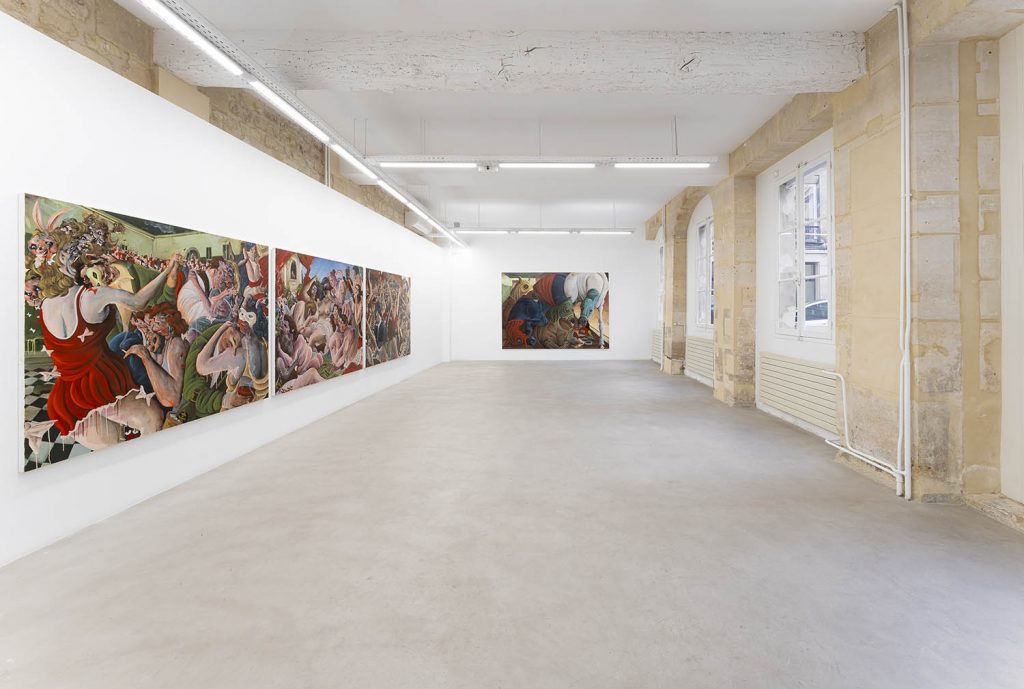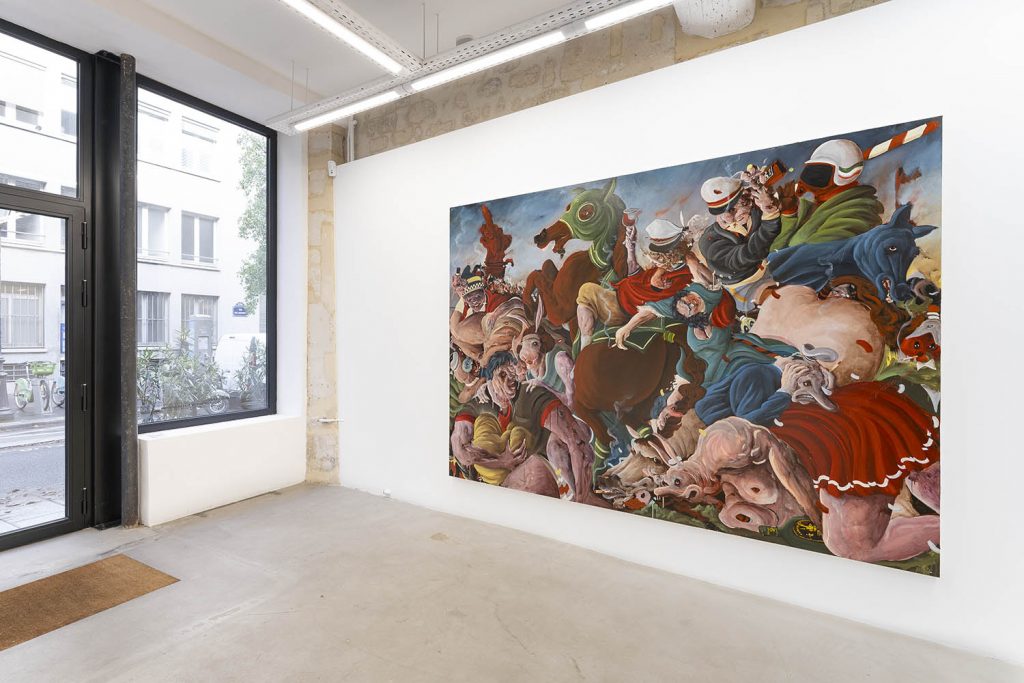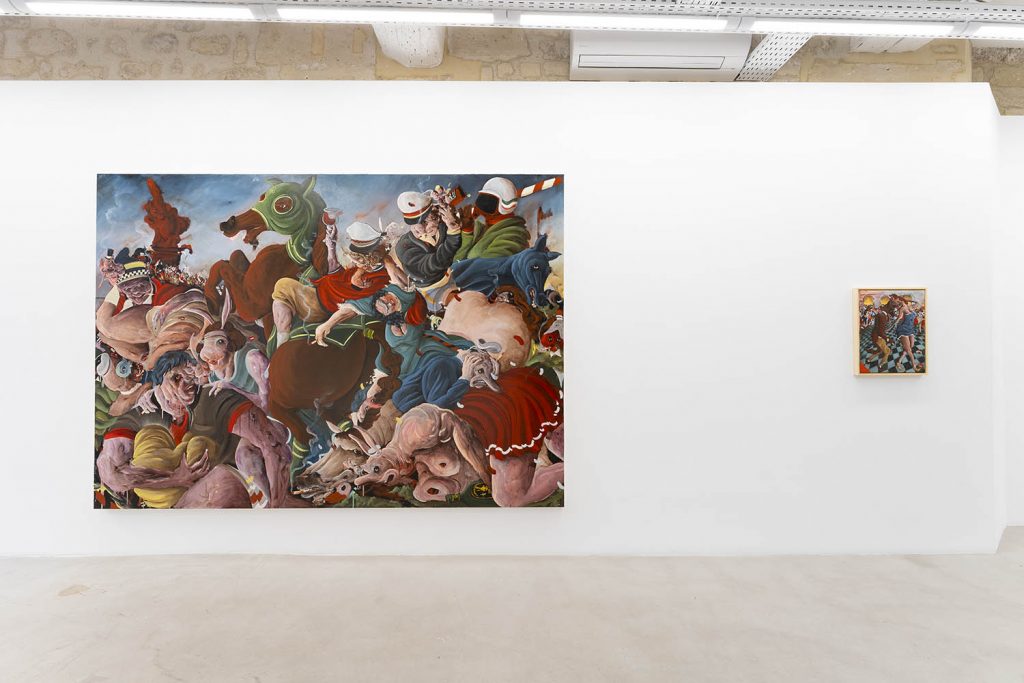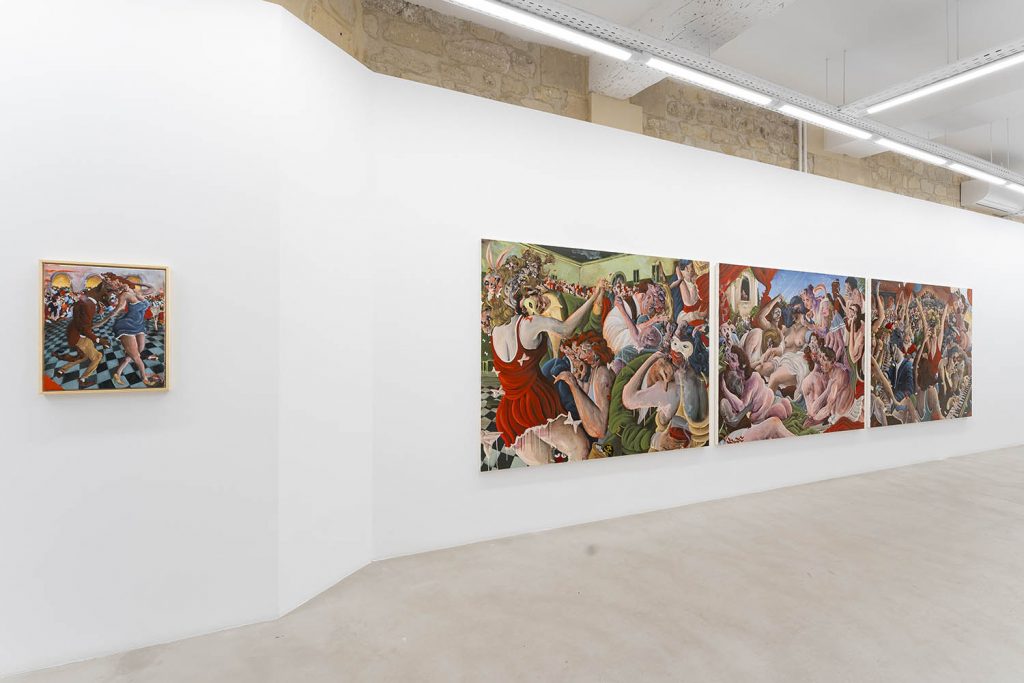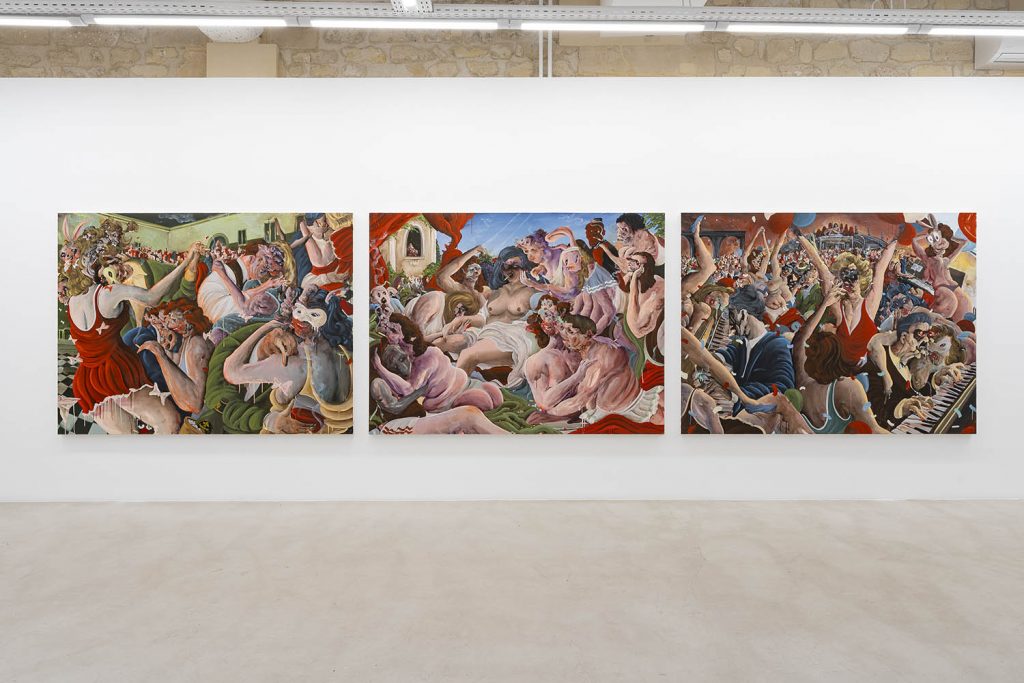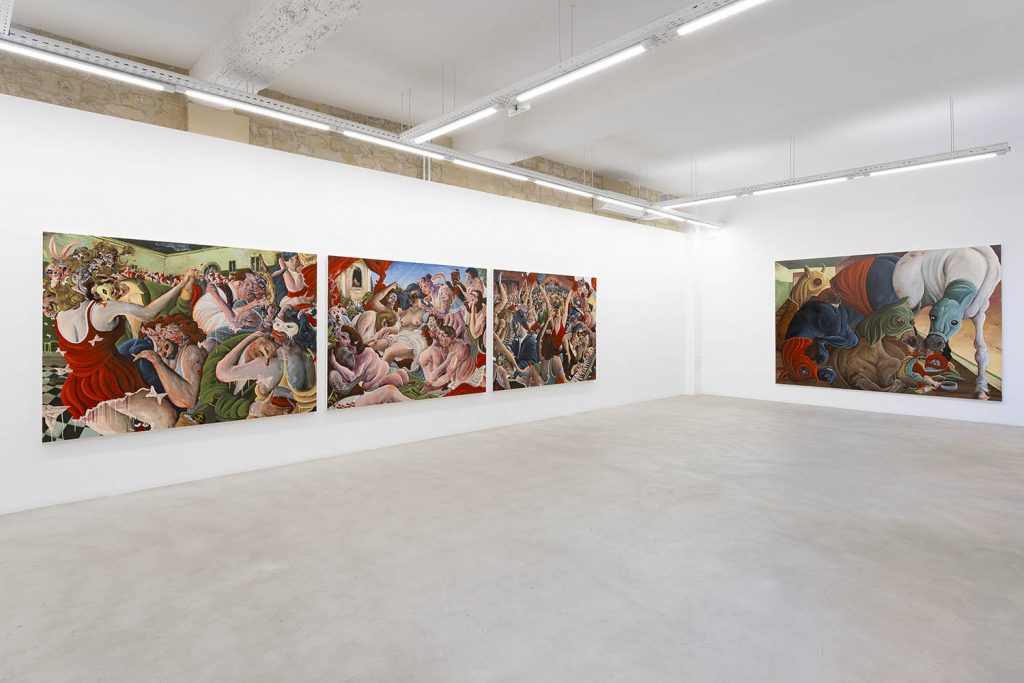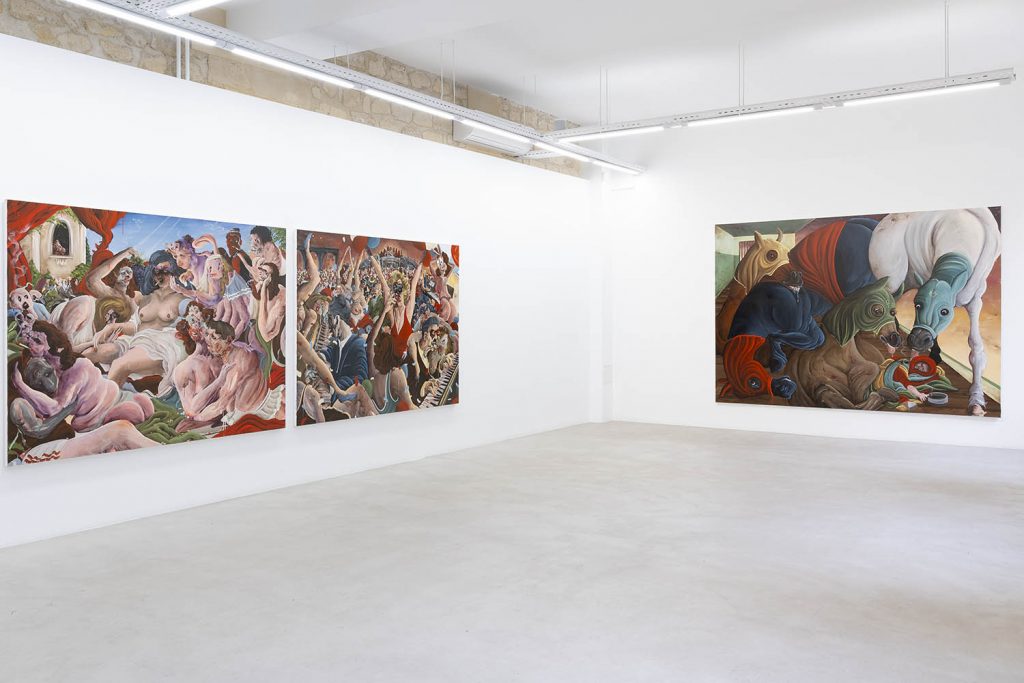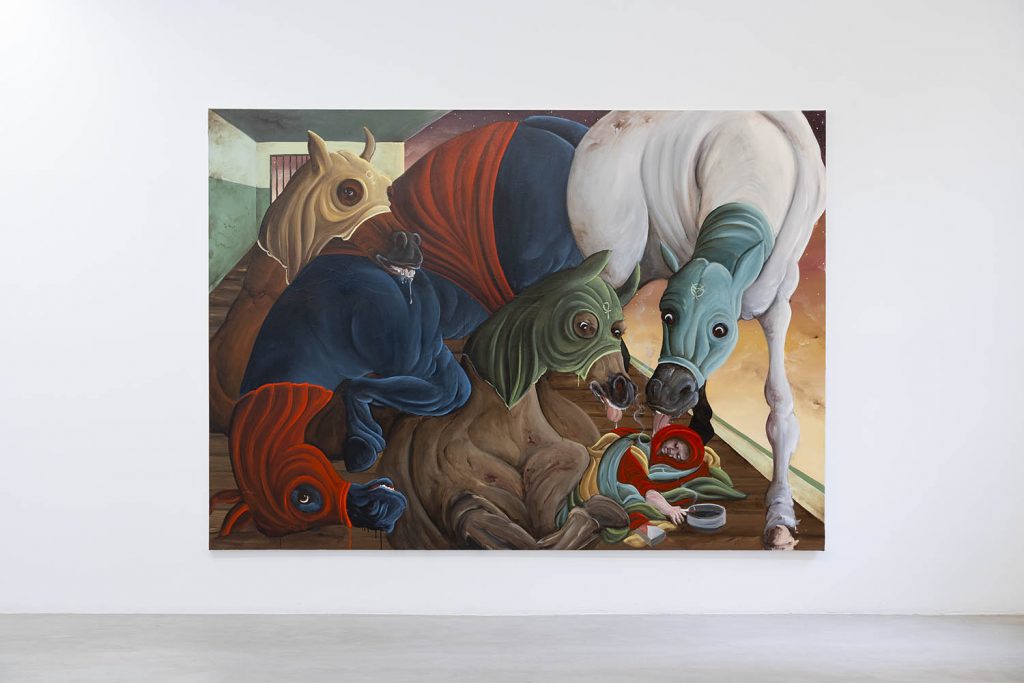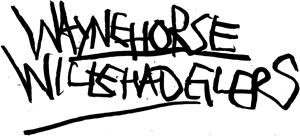BIS ICH SCHLAFEN KANN / JUSQU'À CE QUE JE PUISSE DORMIR
Exhibition
2023
Willehad Eilers paints bodies overflowing with wine, desires and feelings. In the background, a little melancholy music resonates, palpable, not shrill, heard only on second reading.
This new series by the artist, created for the exhibition Bis ich schlafen kann / Jusqu'à ce que je puisse dormir, is part of a deliberate continuity. These works deepen the artist's research, who has now mastered a style whose sincerity is undeniable. A recently published book, Tanz auf der Klinge (Dance on the knife blade), which we are delighted to present on the occasion of this exhibition, will give visitors a more complete and intimate insight into the artist's work and intentions from the outset.
The title of the exhibition, beyond its narrative aspect, brings its share of primary understanding. Each of the artist's titles is the reflection of a thought that fails to be properly verbalized: it represents an idea, a concept, declined in drawing and painting, to be better understood by the artist himself. This is his way of exploring the thoughts that haunt his mind, unraveling personal situations and offering them to the viewer, who can use his canvases as a battlefield on which to test the limits of his own morality. The title here is melodious and lyrical, but it can also be seen as methodical. Above all, it conveys an immense need for peace and rest, like a cry from the heart in a particularly chilling period. As Willehad Eilers makes clear, his aim is to portray this exhaustion, this inability to close one's eyes, and to depict every form of atrocity of which humans, here similar to the Four Horsemen of the Apocalypse, are capable. As if planted in their bodies, the characters who populate the paintings witness the savagery of which they are actors, in the depths of themselves, but behave as innocent spectators.
Sometimes, and even often, cynicism, bitterness and ugliness also come through the party, abusive and grotesque. Sometimes it's no longer synonymous with simple joy, but rather a form of feverish overabundance. It's this ambiguity that the painter chooses to show: in his work, the party is permanent and the image is noisy. It's noisy and smells of strong alcohol, perspiration and orgies of all kinds, viewed with, if not tenderness, rather little malice. Like a son born of Hieronymus Bosch and Thomas Couture, he populates his works with a multitude of characters in fusion, a swarming, accumulated, piled-up, sticky, dripping, overflowing crowd, where all beings are interdependent in this shapeless mass that is as moving as it is immobile. Disproportion and hybridity play out to see who can best capture our gaze.
And in this crowd where, with the exception of the astonishingly realistic animals, everyone gets a kick out of it, amidst the garbage that has become worthy of being represented, in the manner of Bukowski (The Most Beautiful Woman in Town, 1983), moments of grace manage to emerge: the enigmatic or restless eye of a horse, an imperturbably beautiful sky, or architecture that never asked to witness it all.
Our desire for happiness - made almost compulsory today - sometimes turns us into ordinary monsters. Willehad Eilers picks up the crumbs of agapes and bacchanals, elegantly points the finger at ready-made formulas, and finely notes what is laughable by giving importance to the dirty but free pigeon, by erasing the crowns of gala kings. It is rude and clever. Sad and beautiful.
